
Strategy Implementation In Sprints – A Living Digital Board | 2.04
Markus Westerlund
Share this blog
A strategy is useless if implementation never occurs. In this blog, I discuss how the company can kickstart the implementation process and its practice while using sprints and a living digital strategy board.
The eternal fight

A never-ending battle between important matters and urgent matters exists. Guess which one wins? Urgent things always win. How can this be managed? Crystallized focus areas and breakthrough goals are super important. They must be present in the strategic work. Implementation is required, not necessarily by tomorrow, but soon.
People are always in a hurry. Leaders are bad leaders if they don’t fill their coworkers’ days with desirable activity, like productive work that forwards their goals. The more people that the leader needs to streamline, the bigger the hurry is inside the organization. It’s crucial to understand which task is the essential one and how important it is to implement.
Strategic and operative work in the same work pile
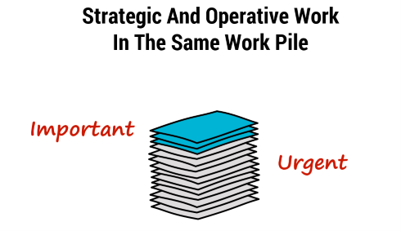
Let’s put everything in the same work pile! If we keep the strategy separate and hidden, it’s not going to work. We need to have urgent and important things in front of our eyes all the time.
Let’s make only a single work pile! Let’s collect the goals together and list the necessary tasks under them, just like how old binders have interleaves. That’s how they are constantly in front of everyone’s eyes while browsing through the workload.

Workpile onto a digital strategy board
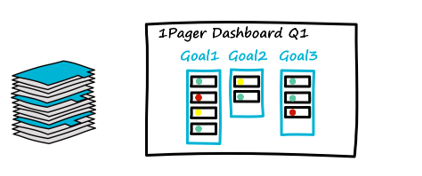
What if we moved the work pile onto a digital board? Let’s put the big goals and choices in columns and the necessary tasks in cards underneath them. The tasks get distributed between people, and decisions get made about who does what. The traffic lights enable us to see, for instance, if the task is progressing, if it is behind in schedule, or if it is experiencing problems.
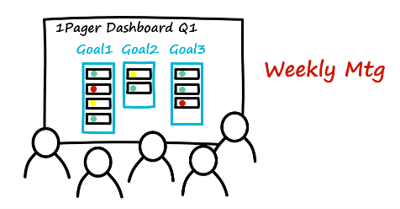
When the goals and tasks get listed on the digital board, have a guess, will the board become alive? When the board gets looked at every week, it becomes very much alive. In a physical meeting, the digital board gets projected onto a wall so that everybody can see it. If the meeting takes place as an online session, one person shares their screen, but everyone can also look at the screen through their browser window, which means everybody can write simultaneously on it.
An online meeting works better than a physical meeting, which is pretty exciting. Many think it’s nice to meet in person. Still, if we take a realistic and blunt perspective and look at this from a productivity and efficiency angle, well-facilitated online meetings are better. Especially if the meeting structure is in order. More gets accomplished when people work online with proper methods.
Online meetings are face-to-face meetings
Ever since 2016, I have facilitated almost all of my workshops online. In the beginning, it’s good to meet in person at least once, to get to know each other. Everyone, however, has their laptops and the joint writing board open during the meeting. People see the board and post input as digital cards. The following sessions take place online because they are so much more efficient. Besides, video conferences are, in fact, face-to-face meetings, if you start to think about it!
Whether working online or on location, what boosts the group’s productivity is a shared board to write on. If the only way of communicating is through speech, comments easily get forgotten, as high detailed documentation rarely takes place.
In online meetings, I sometimes ask for pulse comments about how the session is going. Documentation exists the whole time, but we also read the written input out loud. With a joint writing board, separate transcriptions are not a necessity. Workshop preparation also takes much less time.
Agile strategy implementation
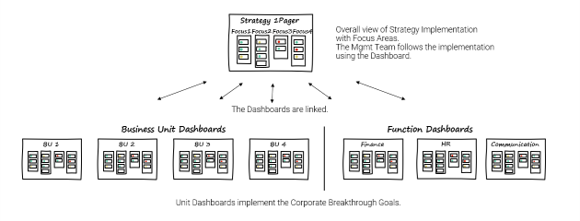
A corporation can follow up its goals from the strategy board. Different business units can have their boards as well. In the above figure, a card gets broken into subgoals. The tasks, of course, also have a person in charge. In the figure, there are four departments, and they all have their boards. Also, there are three functions: Finance, HR, and communication.
The point is that the boards are visible to everyone. If someone wants to know what other people are up to, they can have a look. An agile strategy can be completely transparent! One great thing comes from the fact that free software exists that already comes with basic needed functionality. One practical example of such software is Trello, which I use extensively.

Leading strategy implementation in sprints is a 30-year-old idea. The IT industry has demonstrated that it’s not worth planning a project in detail because the world and the customer need changes over time. Big projects get delayed constantly, and the outcomes aren’t, in the end, even good. What if we merely decided on the big goal and worked in shorter sprints? The customer can track our progress thanks to this sprint structure.
The customer can get unsatisfied if they experience a long project without getting any intermediate results.
When we made long waterfall projects and didn’t show the customer’s intermediate results, they ended up unsatisfied with the final delivery. The customer’s needs had changed along the way. It is vital to understand the customer deeply! That’s when spring leadership came into the picture: Working in small sprints and keeping the customer up-to-date as the sprints progress.
Agile prioritization
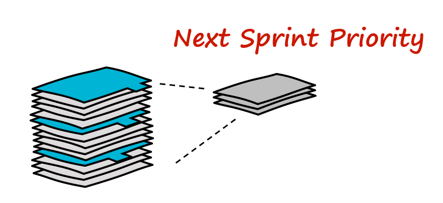
I think every business would benefit significantly from using sprint management. In sprint management, the company works from a backlog. The backlog should be looked at only when deciding on actions for the next sprint. Thinking doesn’t go beyond the sprint at hand. Staff limit thinking to the most critical things, which prevents information overload. Sprint duration is scheduled, which means the sprint is never late. In the old days, when the team didn’t reach a goal on time, the goal stayed the same, but the issue stretched the schedule.
The philosophy is different with sprints, because the sprint is never late. The schedule never changes. Instead, the group must only finish the core of the project. Projects become lighter because not everything needs to get done in a perfectionistic fashion. Otherwise, everyone tries constantly to produce extra, too refined, value. Minor improvements might not necessarily be so necessary. But, when tasks need to get finished, the focus is automatically on the core. Then the job for the next sprint is decided.
Time-boxed goals
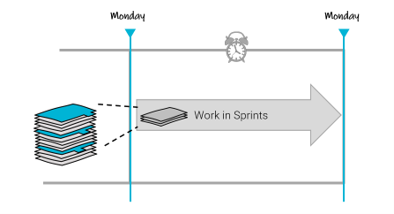
Here you can see a one-week sprint from Monday to the following Monday. I would say a two-week sprint is the maximum time allocated to a single sprint. A Monday meeting gets held, which begins by looking at how the previous week’s sprint went. Are the tasks ready?
People get to decide for themselves what they want to work on during the next sprint. Unfinished tasks move into the backlog, from where they may be chosen for the next sprint once again, if still relevant. Sprints are necessarily not tied together regarding tasks.
Herein lies a psychological factor. When people know that they get asked if they managed to finish their work at the end of every week, they tend to get the job done. If they don’t, they still manage to do a final crunch and think about something they get to finish on time. They know how to focus on the core issues. Set goals ought not to bend to short-term whims, but the goals’ content can and should adapt to needs. It was the other way around back in the day.
Strategy implementation in sprints is a win-win for all!
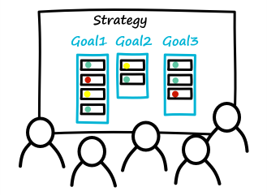
Put strategic tasks in the same work pile together with the operative tasks. Strategy implementation in sprints enables you to implement the strategy much more efficiently, and the schedules hold. That’s it.
Use this approach to ignite your strategy! Read more.🔥
Recent Posts
Stradigo
Stradigo is a brand owned by Rdigo Oy (Business-ID: 2120844-1).
Learn more from our Imprint.
Rdigo Oy is registered in Finland as a Limited company. We are a strategy consultancy located in the Helsinki capital region.
We’ve been in business since 2007. The company name comes from the latin word Redigo, meaning both ‘I shape’ & ‘I renew’.
Stradigo combines the word strategy with Rdigo.